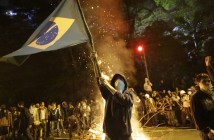On Saturday, an earthquake measuring 7.8 on the Richter scale was registered on Ecuador’s northwest coast, leaving at least 413 people dead and thousands injured. This was the strongest earthquake in the country since 1979, and several aftershocks were felt. Many dangerous waves also appeared on the coasts of Ecuador and Colombia. On Sunday an intense rescue effort was well underway.
Ecuador’s government is providing food baskets, blankets and mattresses and bottled water to people affected by the natural disaster. Doctors, members of the Red Cross, police and the military are working to assist victims. A state of emergency was decreed in order to “maintain order” in the provinces of Esmeraldas, Lor Rios, Manabi, Santa Elena, Guayas, and Santo Domingo. The quake was also felt strongly in the capital Quito, which was left without power for a few moments. Pedernales and Cojimíes, part of Manabi province, were the most affected. Esmeraldas was left without communication.
The Ecuadorian vice president took office until the return of President Rafael Cortez, who was engaged in an official visit to the Vatican. Vice President Jorge Glas thanked the international community for its help, and urged the population not to risk injury by searching for personal belongings in the rubble. The Government announced that 300 million dollars would be allocated for the emergency.
The countries of Latin and Central America sympathise with Ecuador, many sending rescue aid. It is at times like these that regional solidarity is evident.





